Wild Island Kitchen Performs Culinary Alchemy on Newfoundland’s Central Coast
Woodsmoke and Seawater.
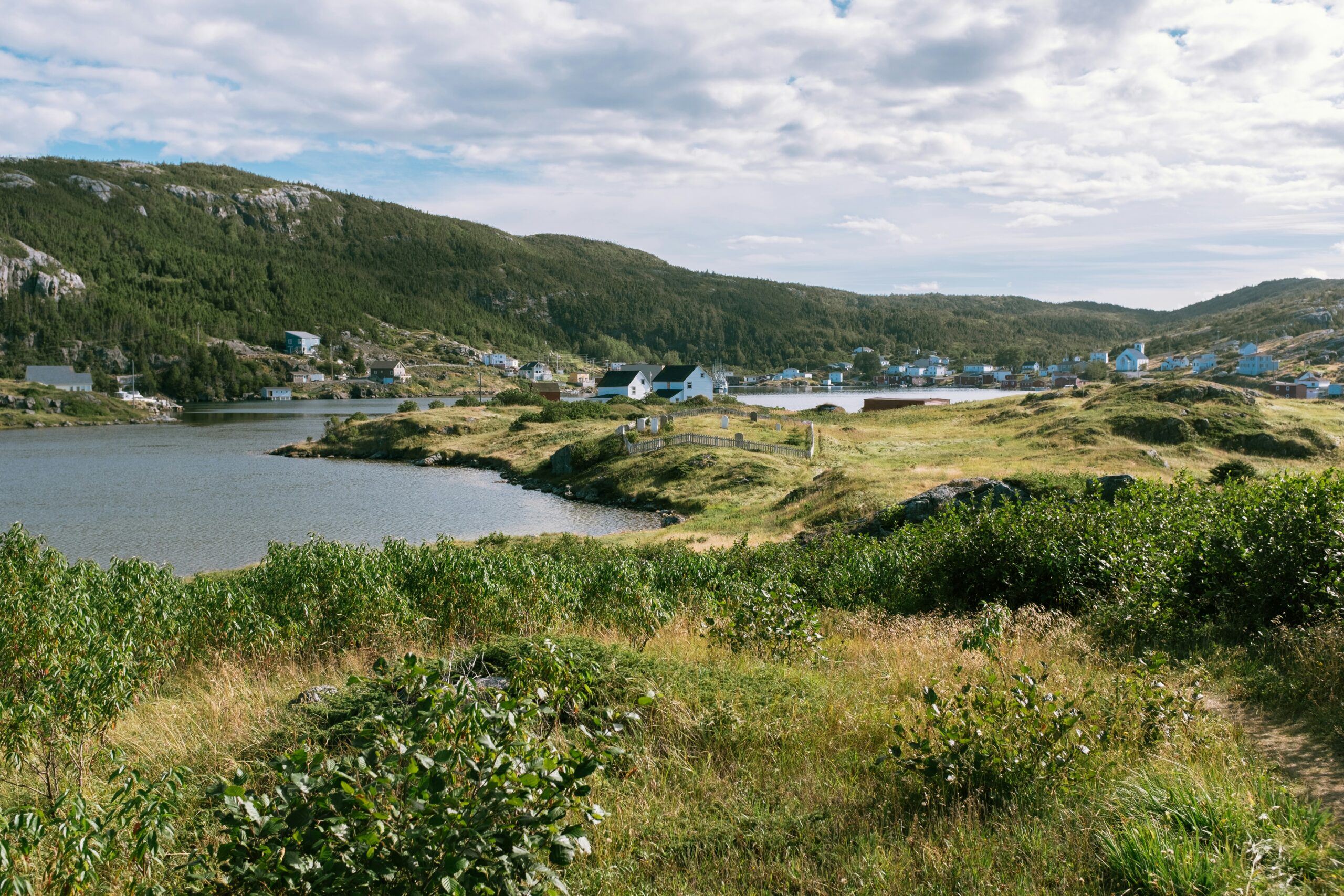
On a secluded strip of rocky beach near Twillingate on Newfoundland’s central coast, chef Crystal Anstey of Wild Island Kitchen is busy arranging the necessary ingredients for a fireside beach boil al fresco, Newfoundland style.
Anstey and her small team are pioneering advocates for sustainable sea-to-beachside-table cuisine in Canada’s easternmost province, providing immersive experiences and insights into the local traditions of this wild place.
Within minutes of our arrival in Manuels Cove on a cool summer evening, a smiling, strawberry-blond-haired Anstey welcomes us with an invitation to embark on a foraging expedition in a nearby forest. Padding softly on the springy green moss to avoid wild purple iris peeking from the undergrowth, we deposit green spruce tips into her well-loved woven basket. Anstey uses the delicate shoots to flavour glasses of seaweed-infused Newfoundland gin and tonic. The extraordinary outdoor food adventure Anstey has created is more than the tantalizing mix of seawater, woodsmoke, and wild seafood. It’s the story of talented local ingenuity at work.
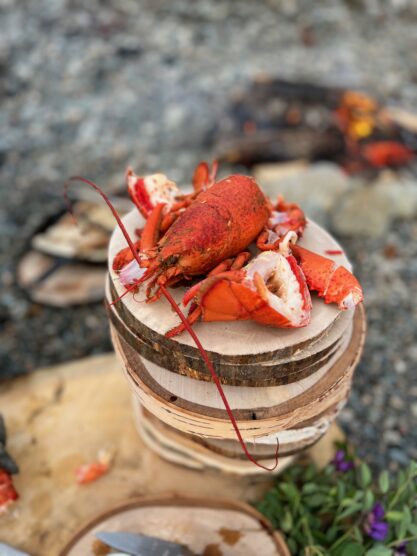
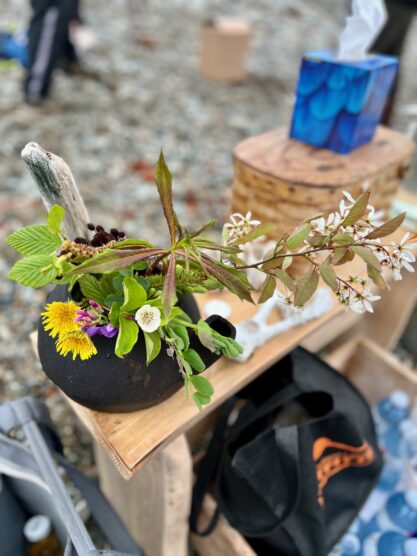
Born and raised in Twillingate, Anstey has been inspired by her surroundings since her childhood days playing pretend on her family’s properties and the forest and beaches of Back Harbour and Labrador. “I’m sure most children across the globe play this pretend kitchen life, where you gather up broken bits of things, and you forage and gather what you know that you can eat or that’s edible.”
While not a formally trained chef, she draws upon her family’s heritage as a member of Labrador’s NunatuKavut in her regard for the bounty of the land and sea at her doorstep. “We want to take and use food that’s close to us, whatever’s in the sea and growing on the land.”
___
Before founding Wild Island Kitchen in 2017, Anstey hosted creative art experiences on local beaches to share her love of food and place. But in incorporating WIK as a business, Anstey has been able to pursue her mission to provide inspiration and employment for other women in her rural community. “I want to inspire people that live here to think about what they have in their backyards; what they could do to create more income for themselves,” she notes.
Anstey jokes that Wild Island Kitchen is the grown-up version of her youthful outdoor hearth. The well-prepared dishes she presents to grateful guests are an expression of her love of the land and sea, born of a desire to showcase their edible largesse.
The lobsters Anstey and colleague Pam Watkins serve at a Wild Island Kitchen dinner are locally caught that day. The wood for the fire is from a local lobster harvester who doubles as a lumberjack. They are providing a five-kilometre (or less) diet of local food and provisions, Anstey says with pride.
To prove the point, a grinning Watkins holds up a healthy wriggling specimen of the main course, a live lobster, before sending it and its companions on their final journey. The job is done mercifully quickly, revealing the bright-pink shells of cooked crustacean, which she expertly deconstructs and artfully plates onto wooden platters in less than 30 seconds.
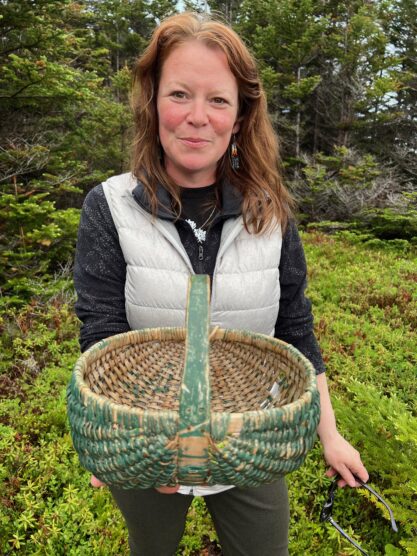
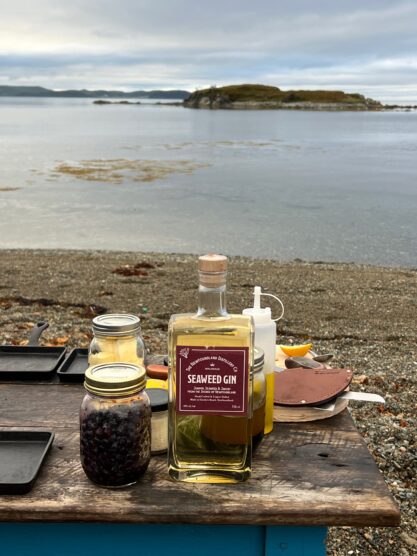
“I’m a fisherman’s daughter,” Watkins explains in a gentle Twillingate lilt, suggesting that anything less efficient would be a scandalous personal fault. The lobster meat is sweet and succulent, disappearing quickly into the mouths of guests sprawled upon colourful blankets likely crocheted by Anstey’s neighbour, aunt, or grandmother.
Wild Island Kitchen provides a three-hour culinary experience of four or five courses, with a seasonal menu of locally caught wild seafood, including mussels, scallops, fresh lobster, local greens, and a sweet baked dessert.
As for Anstey’s next challenge, she plans to broaden her culinary horizons in her own community, including educational programs and workshops addressing food insecurity, the rural economy, and sustainability.
“We live in a community where our hills are flooded with berries, but the kids aren’t eating them at recess.”




